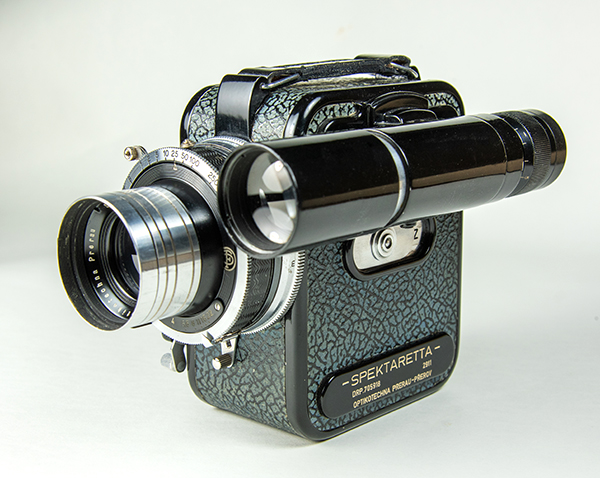
Spektaretta Tri-Color Camera

At first glance the Spektaretta may appear to be an 8mm movie camera but it is actually a 35mm single-shot tri-color still camera. The Nizo Heliomatic 8 movie camera in my collection is somewhat larger and heavier than the Spektaretta.
The Spektaretta dates to the early 1940s. It was manufactured by Optikotechna of Prĕrov, Czechoslovakia. The company continues to operate as a manufacturer and assembler of world class optical, opto-mechanical and optoelectronic products. It is known today as Meopta - optika, s.r.o.
The Spektaretta makes 3 separate 24mm square exposures simultaneously on standard 35mm black & white film. One of the 3 exposures is made through a red colored filter, another through a green filter and the 3rd exposure is made behind a blue filter. The film is processed in standard B&W chemistry. The 3 negatives of a subject can be used to make a full-color print. Today, it is a trivial matter to assemble, or create a color print from separation negatives in Photoshop or other digital imaging programs. In the Spektaretta's day, color print making was a much lengthier and more difficult process.
Production Spektaretta cameras are thought to number 50 units. The camera in my collection, shown above, has serial number 2911 and dates to late 1941 or 1942. I believe it is the 10th camera to carry the Spektaretta name.
The long black tube seen in the photo above is a focusing finder. The finder's objective lens is coupled to the helical focusing mount. As the camera taking lens moves in and out while focusing, the finder lens does as well, and it projects an image onto a ground glass screen with the tube. The finder ocular can be adjusted between +5 and -5 diopters. The camera viewfinder, used to compose a photograph, is on the opposite side of the camera and can be seen further down the page. The focusing finder works well and is easy to use even though the subject appears upside down on the focusing screen. Only a small segment of the scene appears in the finder.
Interestingly, an identical focusing finder was implemented on the Devin 6.5x9cm Tri-Color camera.
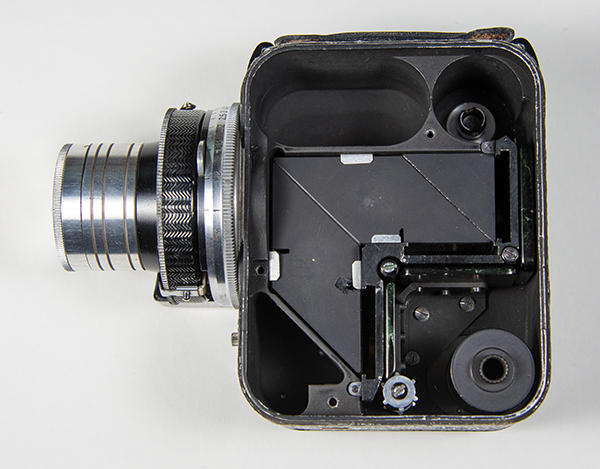
The photo above shows the heart of the camera — the complex prism that directs light from the lens in three directions. The prism is protected by a flat metal plate that was removed for this photograph.
Other components of the camera can be seen above. There is a removable take up spool at the bottom and to its left is the film sprocket. There are spaces behind each prism face for the filters. The large cavity at the top conveniently stores two standard 35mm cassettes.
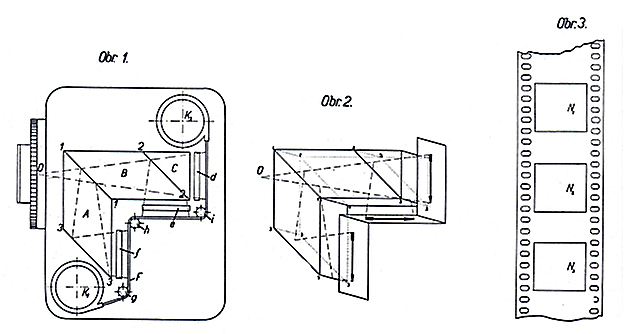
The drawing above, from the Meopta-optika archives illustrates how light travels through the camera to expose the three separate images. The Spektaretta patent specifies that "Uniform intensity of the negative is obtained by a corresponding density of the silvering of the boundary surfaces of the individual prisms in the optical system...". Given that three prisms are cemented together and that their reflecting surfaces are precisely silvered to compensate the exposure through each colored filter, the finished prism is a marvel.
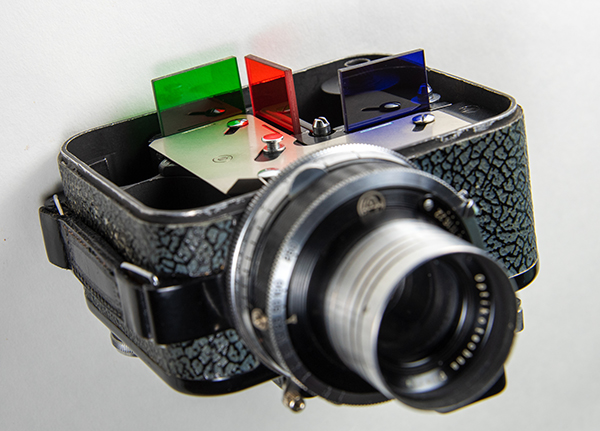
The prism cover plate can be slid back slightly to give access to the glass filters should they need cleaning.
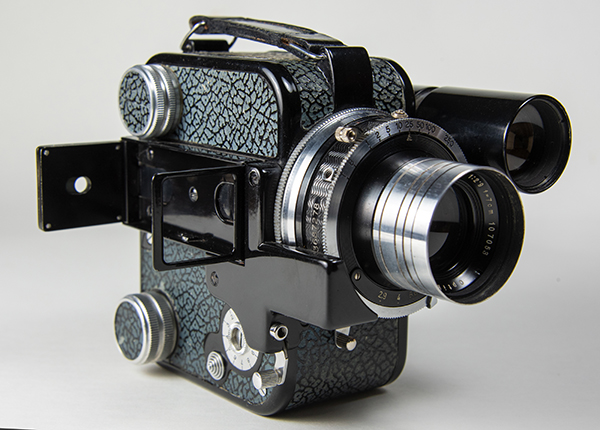
The viewfinder is a simple folding frame type with adjustment for parallax at the rear site. The viewfinder seems to be adequate for the task and moving the eye between the focusing finder and viewfinder is straightforward. The frame counter is numbered to 12, so the camera capacity is 12 unique triple images per cassette. The shutter is a Compur with speeds of 1 to 1/250 second plus time, bulb and self-timer. The lens is not coated. Lens coating was not available for non-military optics at the time. The lens serial number on my camera is 107053. The Spektaretta feels right in the hand. The build quality is excellent.
In February, 1937, a photographer by the name of J. Lindner applied for a patent for a novel tri-color camera. The original aspect of Mr. Lindner's invention was how he managed to arrange three simultaneous exposures on standard 35mm film. In addition, the patent addressed the issue that the three exposures must receive uniform intensity for the resulting color to be true. Another challenge was to assure that the distance light travels from the lens in glass and air is identical for each exposure. Uniform intensity is a design requirement all color separation cameras must meet. Equal light paths is an issue for one-shot color separation cameras. These two critical, and a variety of other important issues were addressed elegantly by Mr. Lindner's invention.
On April 29, 1937, J. Lindner and architect J. Mráček visited Optikotechna to discuss prototyping photographic and projection equipment for photography in natural colors. Mr. Lindner had been working in this area for around a decade, and with good results. The company researched existing U.S. and German applications and patents in the field of color photography in an attempt to discover if Mr. Lindner's invention was indeed original and worth pursuing.
On February 5, 1938, Mr. Lindner again met with the company to discuss the company's offer to purchase his patent. Two issues were on the table. The company would purchase the camera patent and also Mr. Lindner's process for making color prints. The print making process created by Mr. Lindner was given the name Lichrom. An example can be seen below. Lichrom may have been a dye imbibition process. I don't know whether it was patented, marketed, and if so, whether it was successful in the market.
On February 19, 1938, Mr. Lindner accepted the company's terms and an option agreement was negotiated on his patent application.
The camera released to the market was named Spektaretta. During development and testing the camera underwent a series of name changes beginning with Colorette (and/or Coloret - this needs clarification), Coloretta and Spektareta (one t). Prototype testing commenced in the fall of 1938; design changes took place in early 1939. The changes included the addition of a focusing finder, double exposure prevention, and optical improvements.
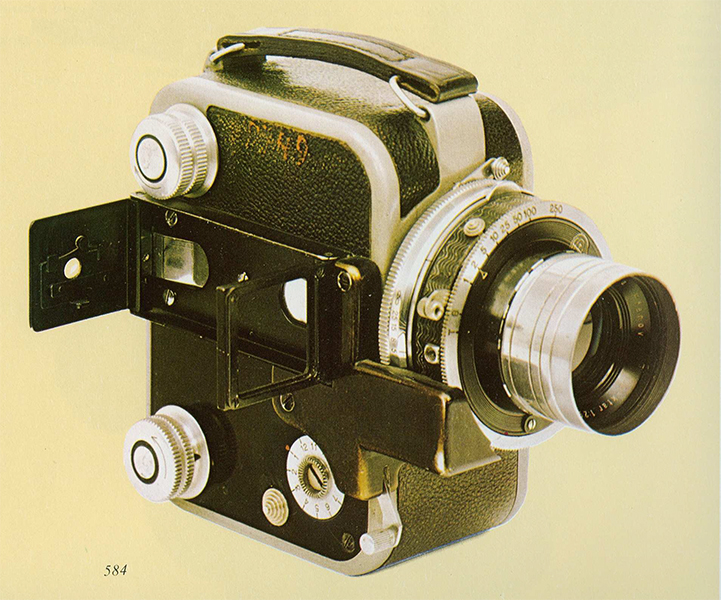
The camera above is a Coloret, now in the National Technical Museum, Prague. Notice that this early camera does not have the focusing finder.
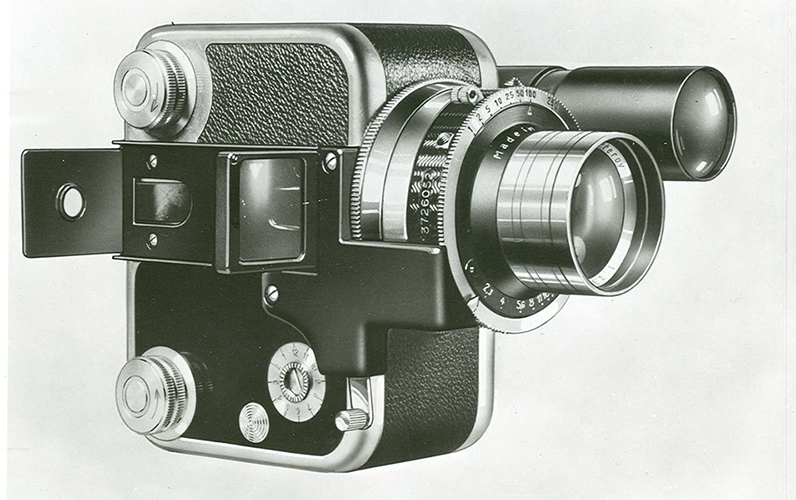
The Coloretta pictured above has a Spektar f/2.3 lens and the focusing finder of the later production cameras.
By mid-April, 1940, tests had been completed and the company was preparing to manufacture a first run of 50 cameras. In mid-June, 1940, three pre-production test cameras were completed. The cameras were to be sent in the fall of 1940 to various professionals for their feedback.
The name Colorette first appeared on Dec 5, 1940. It is thought that the few Colorette cameras that were made were used for testing and development, and in particular to refine the optical system. A variety of lenses appeared on the pre-production cameras. The first lens was an f/2.3, next was an f/3.0 and finally, extensive testing determined that the production version should be an f/2.9 7cm apochromat named Spektar. The lens name changed from Spektaret in the early versions to Spektar on later cameras. The lens focal length also varied during development. It's not clear what other focal lengths were attempted, but the final 7cm focal length has a diagonal angle of view comparable to a 90mm lens on a 35mm camera.
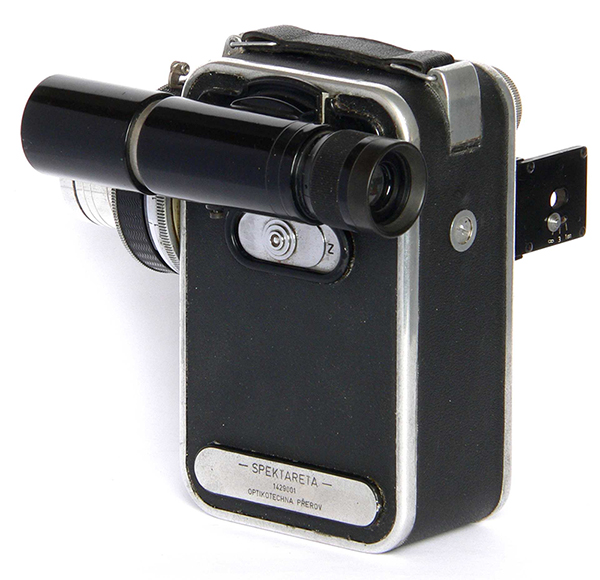
The first Spektareta camera (one t), serial number 1429001, now in the Museum Meopta Prĕrov, was fitted with a 70mm f/3.0 lens. The name Spektareta first appeared on March 25, 1941. On October 3, 1941, 2 cameras from a series of 50 were completed for presentation at an autumn fair. The second camera, shown below, number 142902 was named Spektaretta (double t). Notice that a zero was dropped from the serial number. Its lens was the later 7cm f/2.9, serial number 107001.
The nameplate on the first camera reads: Optikotechna Prĕrov, whereas the second camera's plate reads: Optikotechna Prerau. Prĕrov is the city name in Czech; Prerau is the German name for Prĕrov. Given that Czechoslovakia was at this time occupied by Germany, perhaps it was dictated that the German name should be used. All of the Spektaretta cameras that I know of give the city name as Prerau-Prĕrov on their nameplates.
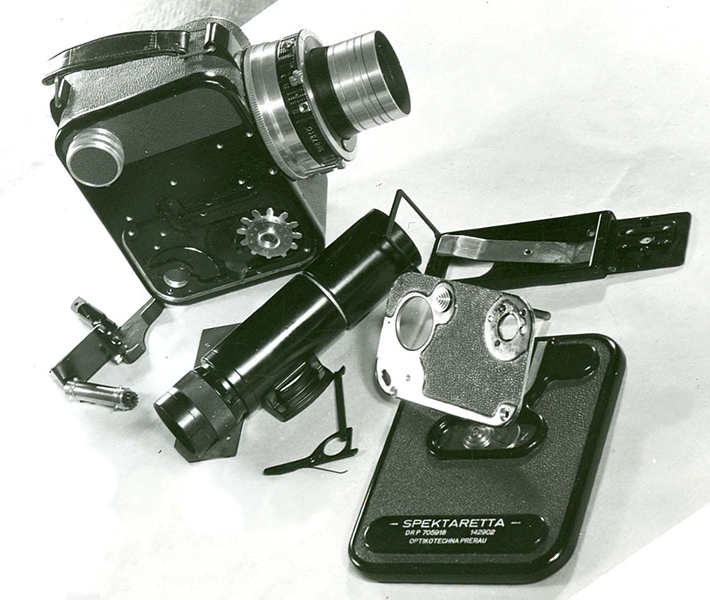
Regarding production camera serial numbers, all of the Spektarettas that I know of have a 4 digit number above 2900. It appears that the two leading digits (14) were dropped.
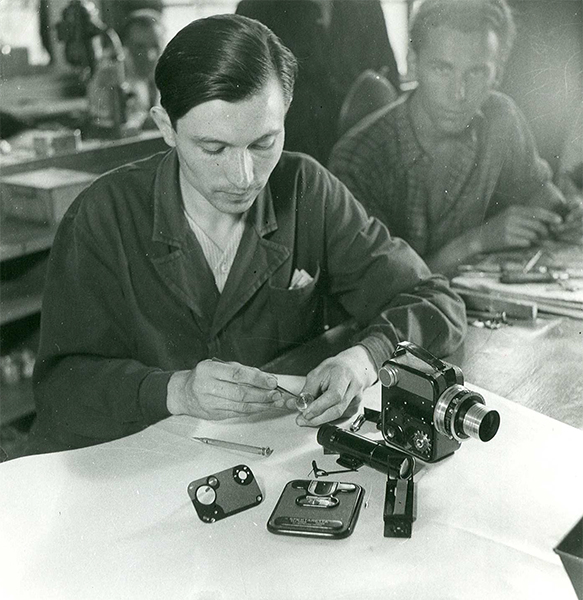
I understand that an agreement had been reached to sell another firm ten thousand cameras after the war. I don't know why that didn't happen. It may have been that the buyer was no longer in business, or dropped out for business reasons. But really, the color separation camera era was drawing to a close after World War II. Kodak introduced Kodachrome in 1935 and Agfa brought out Agfacolor Neue in 1936. Amateur color prints became possible when Kodacolor was launched in 1942. As clever, well-made and handy that the Spektaretta was, it really didn't make sense that an amateur would be able to afford the camera, nor be willing to learn assembly printing. Professionals were still using color separation cameras, but most commercial work was being shot in 5x7 inch format. Had Kodacolor not yet been invented, I think the Spektaretta could have been a successful product.
Post-World War II, Optikotechna built a prototype that retained the central design feature of the Spektaretta, i.e., the prism light path. Design changes included the addition of a top-mounted rangefinder to replace the tubular focusing finder, relocation of the film sprocket, and the 7cm f/2.9 lens was changed out for a 73mm f/2.5 optic. The body may be slightly wider. If so, perhaps to accommodate the rangefinder base length so that it would not overhang the body too far. It does appear to hang over slightly. The top is sloped. This may have been to provide a clear view for the rangefinder. As I don't see a separate viewfinder, I presume that the viewfinder is combined with the rangefinder. The camera name now has one t, as in the first pre-war prototype.
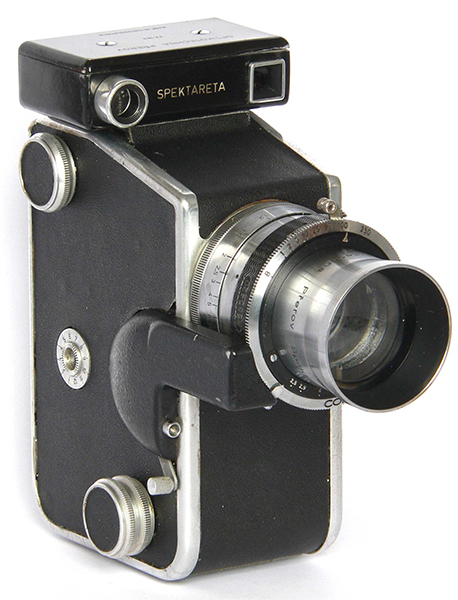
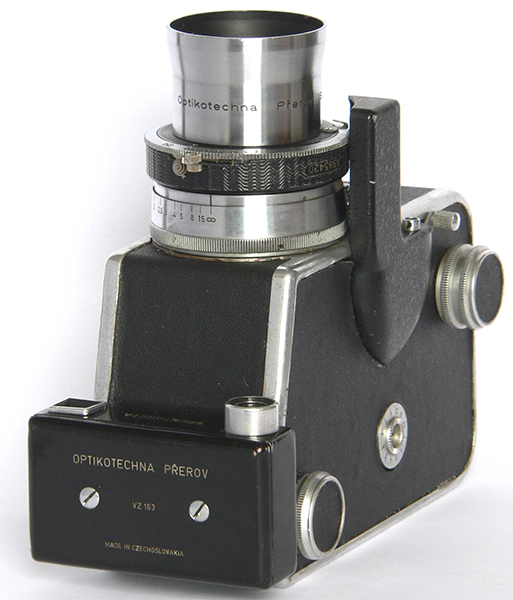
Notice in the photo above that the city name has reverted to Prĕrov whereas the production Spektaretta had Prerau-Prĕrov. Perhaps there was no intention of using the German name after the war ended.
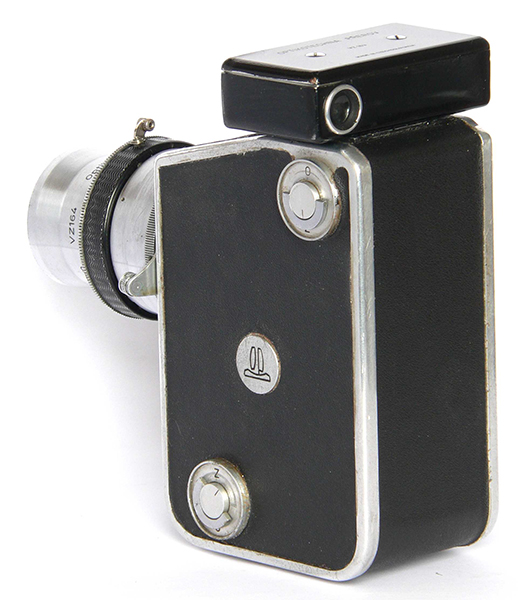
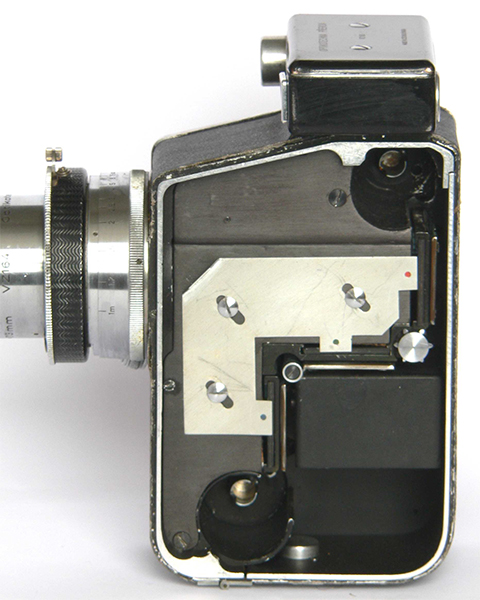
In the two photos above, I get the impression that the back is either hinged or removable. I can't guess why if that is so. Also, there are two rotating latches that correspond with the positions of the film cassettes. Notice the letters Z and O, that in English are interpreted as open and close or lock and unlock. It appears that the latches unlock the side cover but they may also have additional responsibilities. I am supposing that the camera was made to take custom cassettes and that the Z/O latches open and close the cassettes. Perhaps they also serve to unlock the back. Maybe/maybe not?
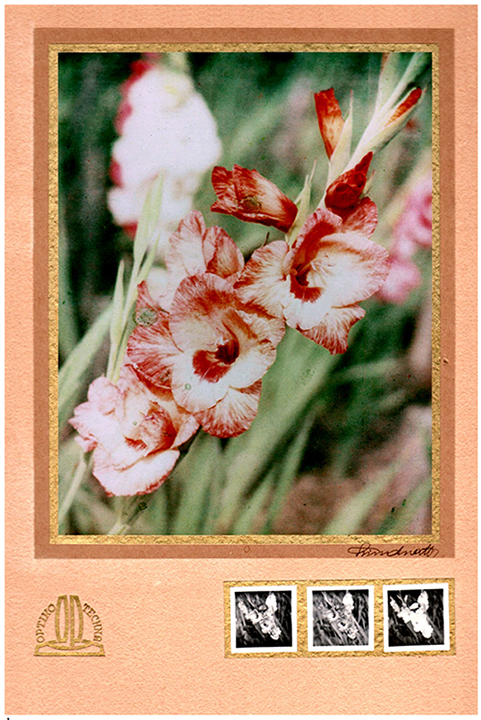
Above is a sample print by J. Lindner, inventor of technology that resulted in the Spektaretta camera as well as a process for printing the separation negatives. This print is from the Meopta-optika archives. It is a beautiful example of the ability of the Spektaretta camera to produce a full-color photograph in an era when color photography was in its infancy.
The historical information on this page is extracted from a document that I received (way back in 2012!) from Ms. Zuzana Veselá, Promotion Officer for Meopta - optika, s.r.o. in Prĕrov, Czech Republic. The document is in Czech, so off I went to Google for an English translation. My understanding is that Ms. Veselá ferreted out bits and pieces from the company archives to construct the document that I received. I hope that my interpretation of the document and the excerpts that I've paraphrased here give an accurate narrative. If not, I'm to blame. I would appreciate corrections and constructive feedback where I might have fallen short.
I would like to receive biographical information on J. Lindner, J. Mráček, the Lichrom process and any other information that would help flesh out the Spektaretta story.
I am grateful to Ms. Veselá and Meopta - optika for their invaluable contribution. As a collector it is not sufficient for me to simply obtain and own an object. I take great pleasure in learning how and why these objects came to be and how they have affected our world. There just hasn't been any background information generally available that tells how the very unique Spektaretta camera came into being.

|
Page created December 20, 2020;
updated June 23, 2022 |